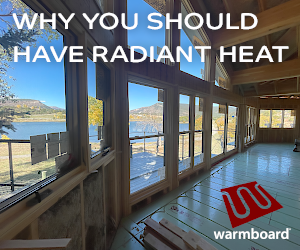In April, registration opened for LEED v4.1 Residential, offering builders and developers a streamlined approach for sustainable homes. The updated rating system prioritizes health and well-being, improved comfort, energy and water savings, and green and healthy materials, which have a higher value to homeowners and residents.
Energy efficient appliances, native plant landscapes or rooftop solar panels are great ways to reduce a home’s environmental footprint. More important is how these elements are incorporated to maintain a person’s comfort and health over the long term, especially in the arid conditions of much of the mountain west.
RELATED: Smart Home Energy Revolution
The Environmental Protection Agency estimates that indoor air is two to 10 times more polluted than outdoor air. LEED-certified homes are designed to minimize exposure to airborne toxins and pollutants. They require proper ventilation, high-efficiency air filters and measures to reduce mold and mildew. Sustainable homes also include higher quality and properly installed insulation, effective air sealing, more efficient windows, and high-efficiency heating and cooling systems. Not only do these elements reduce energy usage in a house, they also make it more comfortable to live in.
Temperature control
Energy- and water-efficient appliances have become commonplace, but emerging automation technologies now allow homes to heat up or cool down at the press of a button. Cloud-based devices allow homeowners to monitor and control energy use in their home at different times of the day. Technology that allows homeowners to be more efficient is an attractive prospect to buyers, particularly those looking to live more consciously.
Some more innovative design techniques include the strategic orientation of a house to maximize solar heating or retractable shades to control solar heating. In addition, adjustable solar panels that move throughout the day can maximize solar energy capture. Passive cooling towers can cool and supplement the HVAC system, while thermal mass helps absorb and store heat.
Buildings are a lot like living, functioning organisms—like the human body, all systems of a building need to operate well together to ensure peak performance. Given that people spend 90% of their time indoors, a great deal of it in their own homes, it makes sense that the places where we live should be sustainable and healthy. There are already more than 1.6 million residential units engaged with LEED, and the economic benefits of sustainably constructed homes, plus the prevalence and standardization of these design tactics, will continue to drive that number up.








